As I heard in News, moon jellyfish are making a significant appearance recently in many coastal areas due to various reasons such as overfishing of jellyfish predators and climate changes. As people are aware of the stings, you may wonder if the moon jellyfish sting is dangerous or not.
Fortuntly moon jellyfish sting is not dangerous to human. So, let’s talk about it in this article.

moon jellyfish sting
Jump To
- 1 moon jellyfish sting
- 2 Are moon jellyfish sting dangerous to humans?
- 3 What happens if you get stung by a moon jellyfish?
- 4 What does it feel like to be stung by a moon jellyfish?
- 5 Do moon jellies sting hurt?
- 6 Can I touch moon jellyfish?
- 7 What to do if you’re stung by a jellyfish?
- 8 Sting Signs and Symptoms
- 9 How do you neutralize a jellyfish sting?
- 10 Does peeing on a moon jellyfish sting help?
- 11 How does vinegar help jellyfish stings?
- 12 Can you touch the bell of moon jellyfish?
- 13 Can you touch a dead jellyfish?
- 14 How to avoid Jellyfish stings?
- 15 More facts about moon jellies
Moon jellyfish do not have long, potent stinging tentacles like any other common jellyfish. Instead, they carry hundreds of fine short tentacles around their bell. But, like any other species, moon jelly tentacles also contain stinging cells or stinging nematocysts to paralyze their prey. However, the stinging power of moon jellies is known to be less powerful than other jellies species.
Read More: Moon Jellyfish Care Guide | Everything To Know | Exotic Pets
Are moon jellyfish sting dangerous to humans?
No. As we said above, moon jellyfish stinging power is not strong enough to hurt humans badly. The nematocysts are not deep enough to penetrate through the human skin and enter into human cells. Therefore they are considered the least dangerous to humans. However, moon jellyfish stings can make you feel a stinging sensation and give you mild irritation in the contacted area.
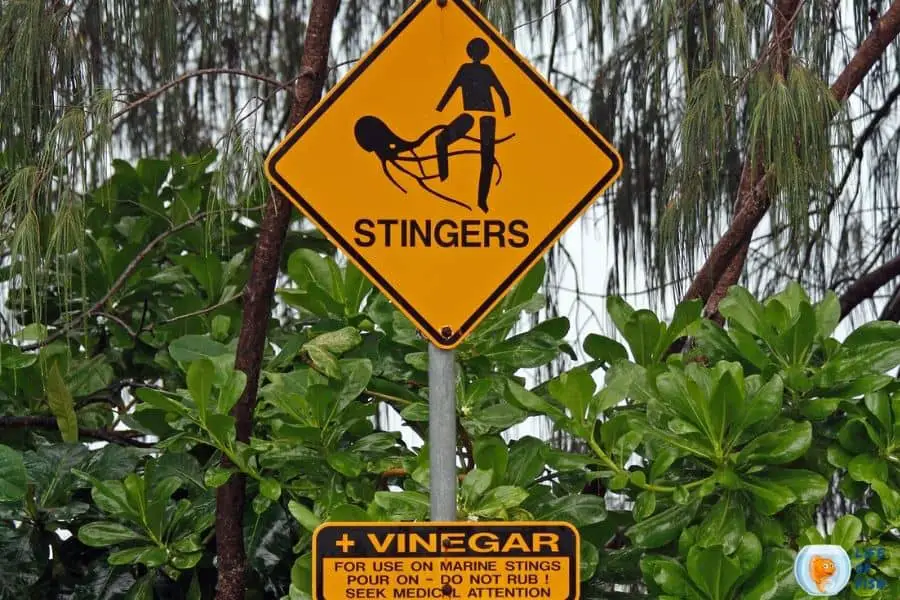
What happens if you get stung by a moon jellyfish?
When it stings you, its nematocysts(stinging cells) get stuck in your skin. Nematocysts continue to release jellyfish venom into your body, and the body starts reacting to the poison. This will result in immediate pain in the area and red, irritated marks on the skin. Since the sting is not dangerous, you may not experience any severe symptoms of burning sensation, like dizziness, headaches, swollen tongue or lips, difficulty breathing or swallowing, etc.
What does it feel like to be stung by a moon jellyfish?
Since the strings are tiny, the initial sting will not penetrate the human skin and only result in a Burning, prickling, or stinging sensation. Then the affected area will start to itch and go away after a few hours. However, if you are more of a sensitive person, you may get more severe symptoms soon after the jellyfish stings you. In that case, you will have to call the ambulance right away.
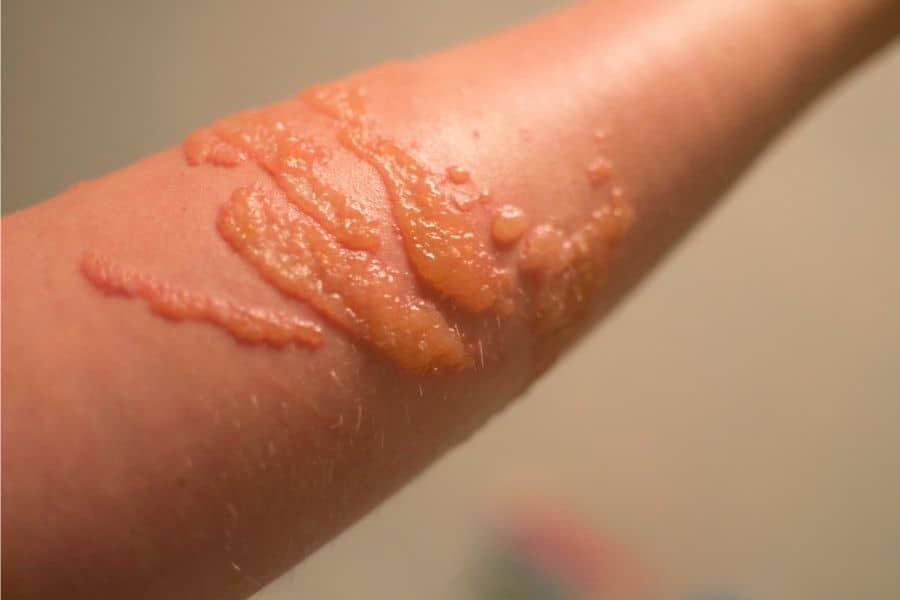
Do moon jellies sting hurt?
Their stings do hurt a little. But, that’s not a sharp pain you would consider of. Even though it hurts initially, it will soon disappear, and the area will start to itch badly.
Can I touch moon jellyfish?
Moon jellyfish do not have toxins around their body. They only have toxins in their tentacles. So, it is safe to touch the squishy bell of moon jellies if you like. But, if you try to touch the other side, you may get a little bit hurt from their stings.
What to do if you’re stung by a jellyfish?
The first thing you have to do is remove the nematocysts in the stung area. You can pluck them off with a pair of scissors, but it will take so much time as the stings are tiny, and there will be thousands of stings in the stung area. So, the fastest way to remove nematocysts is by exfoliating the area with sand mixed with seawater.
You can also scrape the stings with a credit card, razor, or knife blade by applying shaving foam to the stung area.
Then soak the stung area in warm, acidic 5% white vinegar solution for half an hour. The acetic acid in the vinegar will alleviate the pain and prevent the release of more venom from remaining stings almost immediately.
Do not rub the painful area as it will cause nematocysts to fire more venom and be more painful. Then remove any remaining venom by applying a paste of baking soda and water, if available. Since the sting is mildly toxic, following this step is optional. After about an hour, take a hot shower to deactivate any remaining jellyfish venom.
If the pain and itching don’t go away within a few hours, or if you notice any severe symptoms, head to a hospital right away.
In there, you will be treated with medications, including antibiotics and anti-inflammatory medicine. Severe symptoms often occur if the moon jellyfish is larger than usual. So, keeping a record of the moon jellyfish size may help you when suggesting a hospital visit.
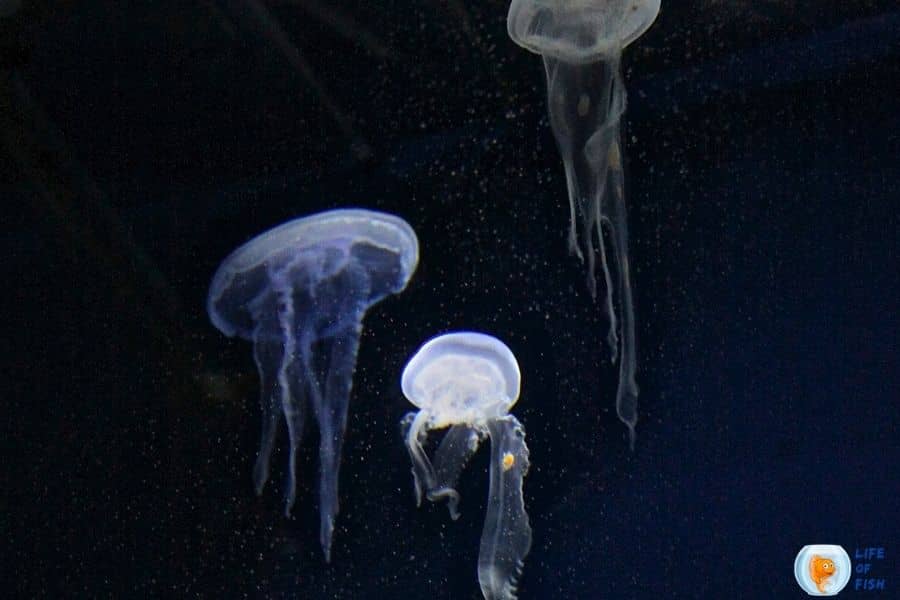
Sting Signs and Symptoms
Their stings are mildly toxic and not dangerous to humans. But, sometimes, you may experience more severe symptoms due to the stings if you are prone to allergies. Some of the most common signs and symptoms of stings are listed below.
- Immediate Burning, prickling, or stinging pain in the stung area
- Consistent itching around the stung area
Additionally, if you experience any signs or symptoms listed below, you should call for an ambulance right away.
- Having trouble breathing or swallowing
- The pain gets worse
- Nausea
- Vomiting
- Dizziness
- Headache
- Swollen tongue or lips
- Change in voice
- Having muscle spasms
- Stung area is too large
- Was stung in the eye or mouth
- If you are unsure of jellyfish species, you have been stung by
How do you neutralize a jellyfish sting?
You can neutralize a sting by several methods. The most common practice is soaking the area with white vinegar. You can also use Adolph’s meat tenderizer or simply saltwater to neutralize the sting. However, the information based on new research suggests warm water and vinegar as the best treatment for neutralizing venom in stings.
Does peeing on a moon jellyfish sting help?
No. Peeing on sting eases the pain is just a myth well-known around the world. According to Dr. Paul Auerbach, an emergency physician at Stanford University Hospital and an expert in jellyfish stings, urine has not been scientifically proven to help with stings. Experts also advise against it because pee may even worsen the sting. So, next time, do not try to treat the sting with urine.
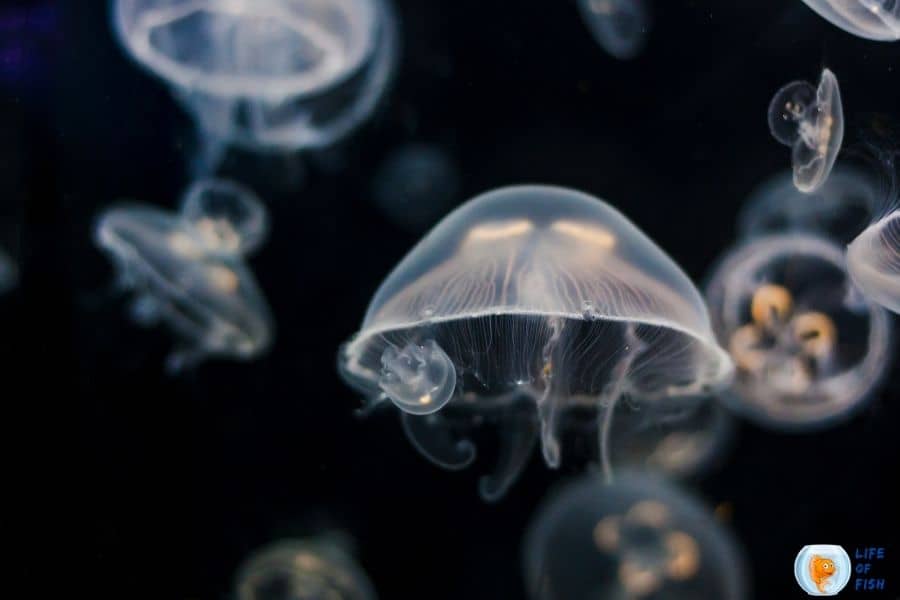
How does vinegar help jellyfish stings?
Vinegar contains acetic acid. Acetic acid can inactivate jellyfish nematocysts so that they can’t fire. So, when you remove the stings, you won’t end up with more jellyfish venom than before. According to a study published in The Medical Journal of Australia, vinegar or its vital ingredient, acetic acid, could relieve pain and “rapidly and completely” suppress further venom release.
Can you touch the bell of moon jellyfish?
Yes. You can safely touch the bell of the moon jellyfish from the upper side. Moon jellyfish are not powerful swimmers. They mainly depend on the water current to drift away. So, chances are high; even if you touch a moon jelly, it will not move. So, if you get a chance to touch the bell of a moon jelly, do not hesitate to touch it if you like.
Can you touch a dead jellyfish?
No. Do not attempt to touch a dead jellyfish as it can still sting you. Although the jellyfish is dead, it can still sting you because the nematocysts’ cell structure is preserved for long after the jellyfish has died. In the event that a foreign object comes into contact with one of the cells, nematocysts release a thread that contains the venom. The venom is released in a continuous stream until the cells are removed. Therefore, it is not a good idea to touch a dead jellyfish.
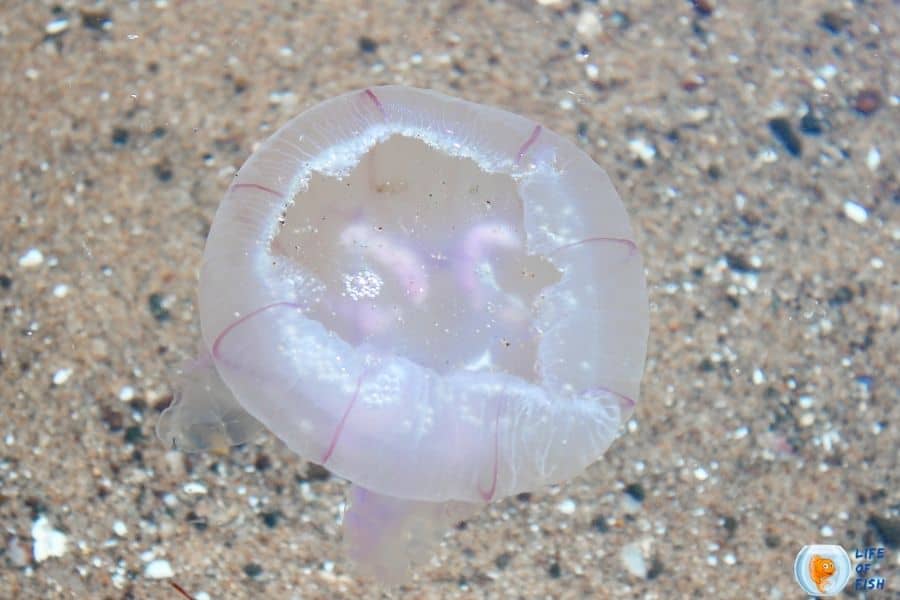
How to avoid Jellyfish stings?
While you may love to explore the ocean, it is better to avoid stings at all costs. The sting is particularly less dangerous. But there are some jellyfish species that can be deadly to humans regardless of their size. To avoid jellyfish stings, swim only at guarded beaches. If lifeguards are around, they will most likely warn you or at least post a sign or fly a warning flag.
When there is “hazardous marine life” in the sea, some beaches may fly a purple caution flag to alert people. Always bring some vinegar and a pair of tweezers with you. So, if you get stung by a jellyfish, you can follow the steps to neutralize the venom. If you are a professional scuba diver, this is not the case, as you already know how to protect yourself. But for an average person, even the sting can be a problem. So following the guidelines provided by the beach officials is highly advised.
More facts about moon jellies
How to identify a moon jellyfish?
Moon jellyfish, or Aurelia aurita, are easily recognizable because of their four circles visible through the translucent bell. The bell is whitish and transparent, and these four circles (gonads) are generally purple in color. They have hundreds of short, delicate tentacles around the sides of the bell that helps them capture prey. They reach about 2-15 inches in diameter, but the average size is approximately 7 inches in diameter and 3 inches tall.
Moon Jellyfish distribution
Moon jellyfish are distributed in the world’s oceans including coastal waters, mainly in the Atlantic, Pacific, and Indian Oceans. They are prevalent along North American and European beaches. You can find significant amounts of moon jellyfish inshore, which are estuaries and harbors. Although they prefer tropical waters, they can also survive in cold water down to 6 °C and low salinity water as low as six parts per thousand. They are prominent in the summer during July and August when the temperature is high, and the dissolved oxygen (DO) level is low.
Read Next: How Are Jellyfish Born? | 8 Interesting Facts On Jellyfish Life Cycle |
